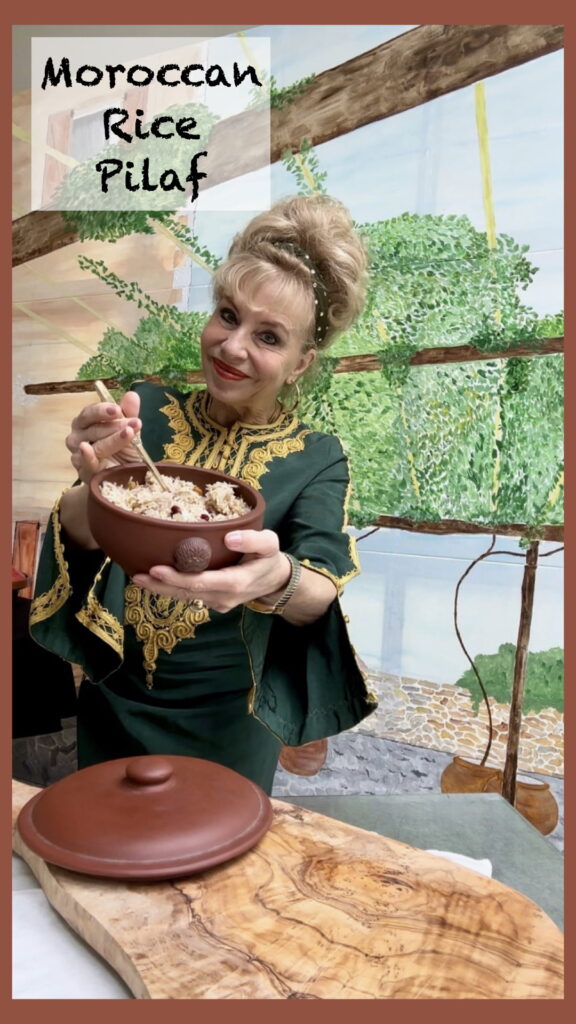Moroccan Rice Pilaf With Dried Fruit Recipe, cooked stove top, with an exotic spice mix, makes this recipe a delicious side dish to any meal.
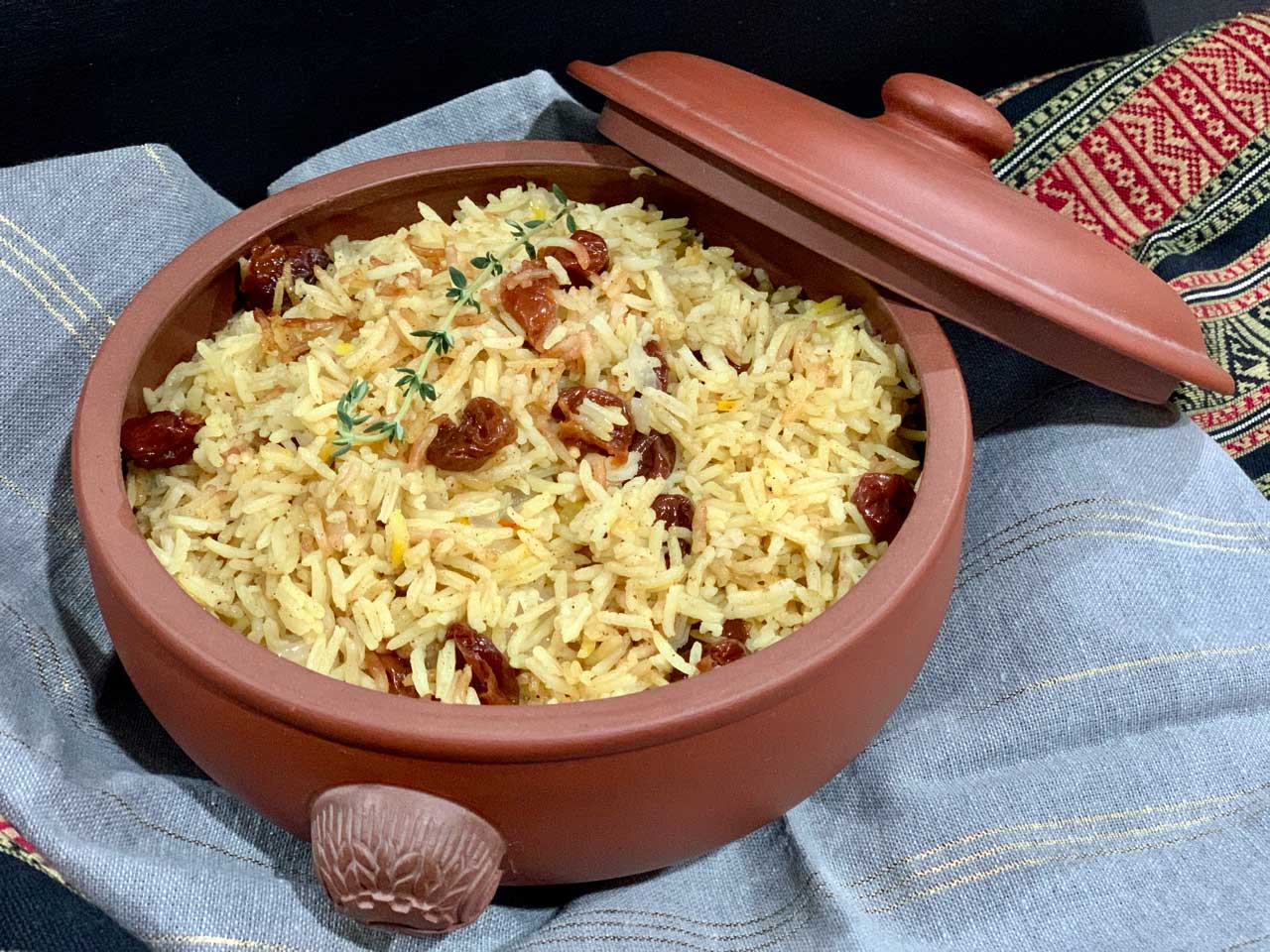
RICE: The International Food
It amazes me that rice is grown in nearly every continent in the world, which means it has that many different ways of preparing it.
Rice is among the most versatile of foods.
It can be served as an accompaniment to a meal, added to soups or become an amazing dessert, also served with dried fruit.
Imagine that.
A food that is equally known as the breakfast food that starts the day in Japan and China, or end the day with a luscious pudding in Greece.
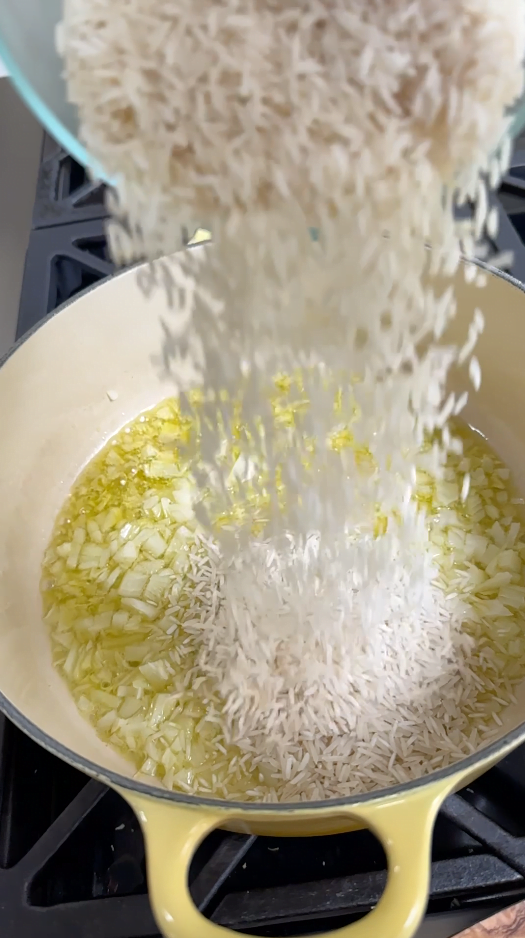
Moroccan Cuisine
It is well known that Middle Eastern cuisine embraces the use of warm spices in many a fragrant rice dish.
The addition of caramelized onions, dry fruits, toasted almonds or other ingredients are what turn a simple sticky rice preparation, into a fragrant rice pilaf!
Adding Dried Fruit To Savory Dishes
The sweetness of dried fruits liven up the flavors in any savory dish.
Add to that, an element of sour, salty, bitter or heat, and you have the mouth’s most favored dance of umami tastes going on inside.
In Moroccan cooking, as is often the same throughout many Mediterranean regions, dried fruits were often added to meat stews, because they aided in tenderizing inexpensive cuts of meat.
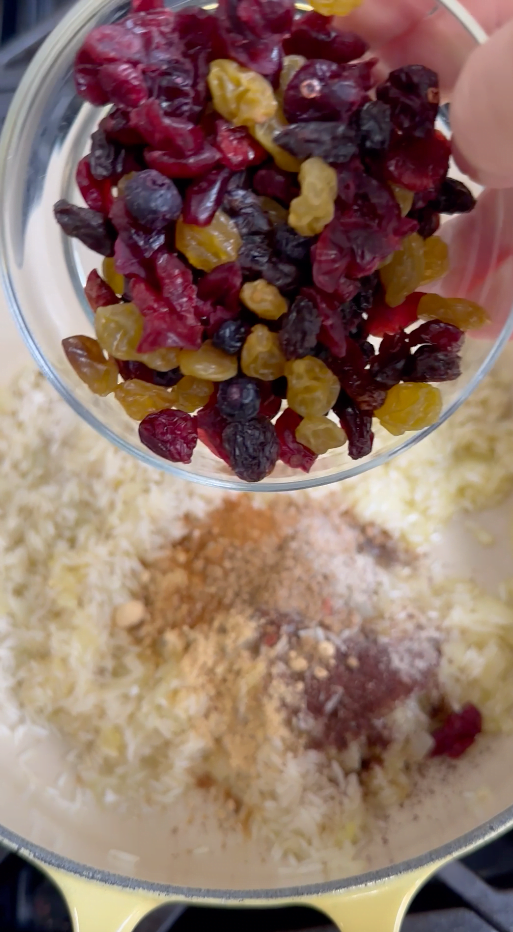
The Sugar Molecules Of Dried Fruit
Did you know that sugar molecules are much larger than salt ions?
Although salt acts as a natural tenderizer in cheap cuts of meat, ancient day cooking instinctively knew how dried fruits, often dates raisins or figs, would tenderize an old and tough cut of meat.
Fast forward to modern day barbecue fanatics and they will each swear by their own concoction of meat tenderizing marinades.
What do these barbecue recipes have in common?
That’s right, most often you will find their base, in some form or another, of dried fruits, fresh fruit juices, or fermented fruits, ie wine!
Why? Sugar!
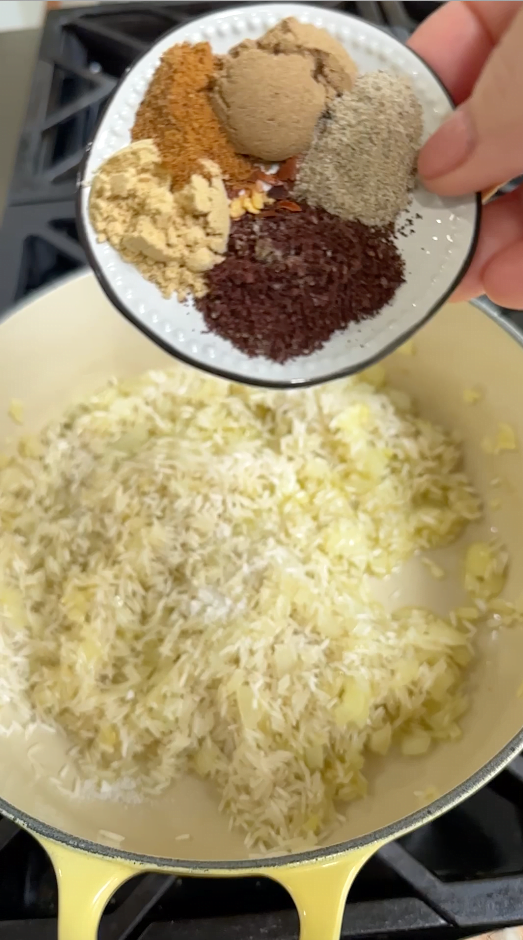
Moroccan Rice Recipes Are Easy Vegan Recipes
Wouldn’t you say that this recipe is nothing short of brilliant?
Indeed, because once it is made, it has a vast variety of uses for both meat eaters, pescatarians and vegans alike.
Often times, you will find beautiful vegan, or vegetarian dishes throughout Middle Eastern cooking.
Certainly, the roasting of aubergines, squashes and okra over open fire is perfect flavors to accompany a variety of favorite rice recipes.
Consequently, a friend of mine, Sanaa, a Syrian gal living in South Dakota, has built her restaurant business around fabulous Middle Eastern vegan and vegetarian dishes.
Favorite Mediterranean Meat Dishes To Serve With Rice Pilaf
Originally, I created this jasmin rice recipe, with dried fruit, to serve with a favored Iranian chicken stew, called Fesenjan.
This dish is very similar to a Moroccan chicken dish I love, called a Tajine, although I most often make a Lamb Tajine to serve with Moroccan pilaf.
Moreover, a variety of fruits, both dried and fresh, can be cooked into this rice pilaf and served alongside lamb shanks, in a Mediterranean beef stew, or simply all by itself with a dollop of homemade Lebneh/Yogurt on top.
Cooking Rice
There are about as many ways to approach cooking rice as there are continents that grow and prepare rice.
Obviously, there isn’t one perfect approach to cooking rice, whether in a slow cooker, stovetop, a pot over fire or the microwave.
Rice cooking, in short, is something we often revert back to our roots, as to how we prefer it cooked, don’t we!
Asian Style Rice
In many Asian countries, rice is usually prepared in a rice cooker, which steams it, and has it come out looking pure white.
Since I didn’t grow up making rice this way, it is not my favorite way of preparing rice, simply because it’s just rice.
Nothing else, though I suppose you could equate it to the way America often serves bread with a meal.
We see… back to our roots!
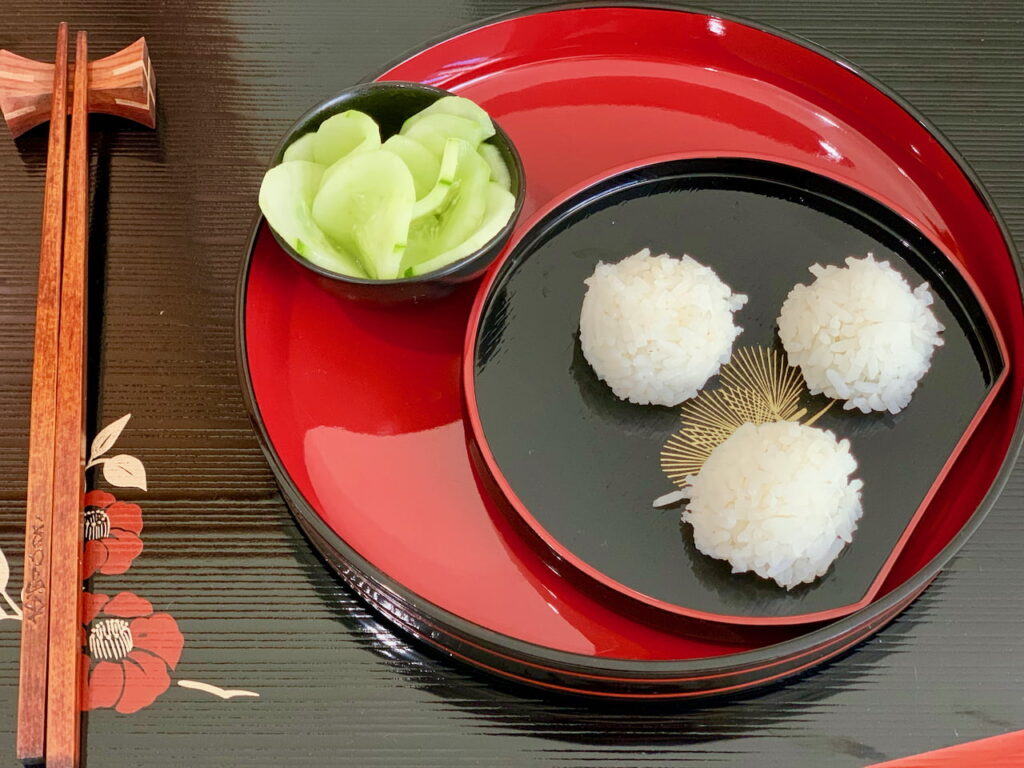
Southern American Rice
Then, head way south here in America and you will find an entire culture and cuisine built around ‘dirty rice’!
Don’t blame the Americans alone, we dipped our finger in French, Spanish and West African pots on a stove, tossed the flavors all together and came out with some down-home comfort food that got re-created in Louisiana Creole cuisine.
Mediterranean Rice Cooking
As is my most familiar rice cooking style, i’d say most rice dishes sauté onion in olive oil or melt butter and create a nutty flavor with the rice by browning the outside of the rice first before steaming it.
A beautiful basmati rice pilaf starts out this way.
The addition of boiled water or broth, Moroccan spices and fruits are added once the rice is turned down to medium-low heat and cooked low and slow.
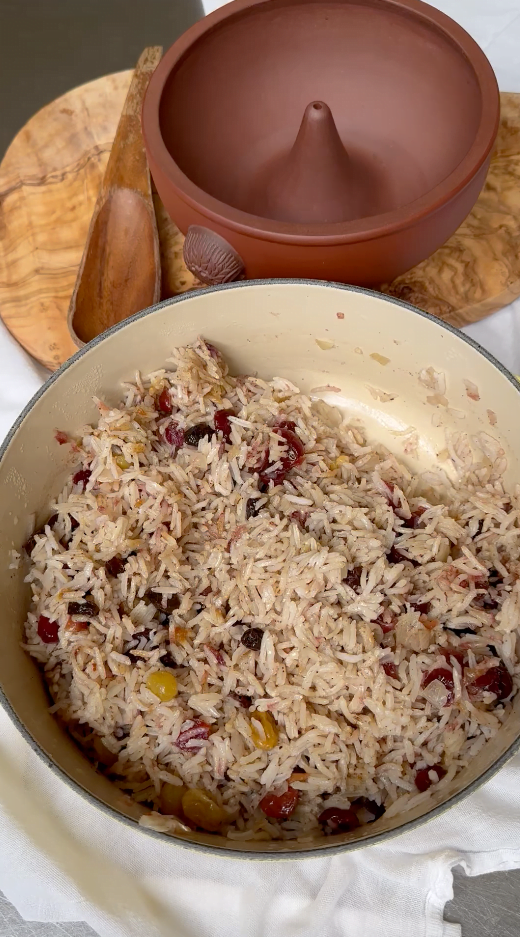
A Tip For Cooking All Kinds Of Rice
Washing rice in a large bowl of water, should be the first step for cooking all kinds of rice.
Taking care to swish and squeeze with your hands.
Rinse a second time and drain.
There is starch dust on the rice, especially white rice, and it is nice to rinse it off before cooking.
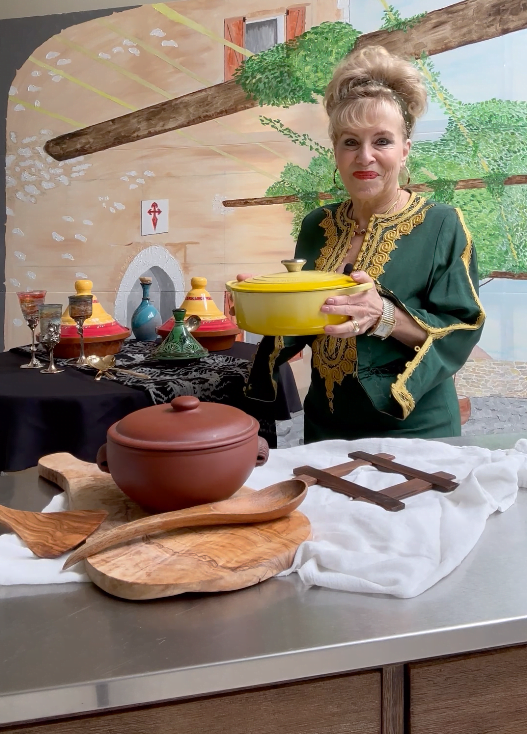
Tips For Leftover Rice
Leftover rice? Is there really such a thing?
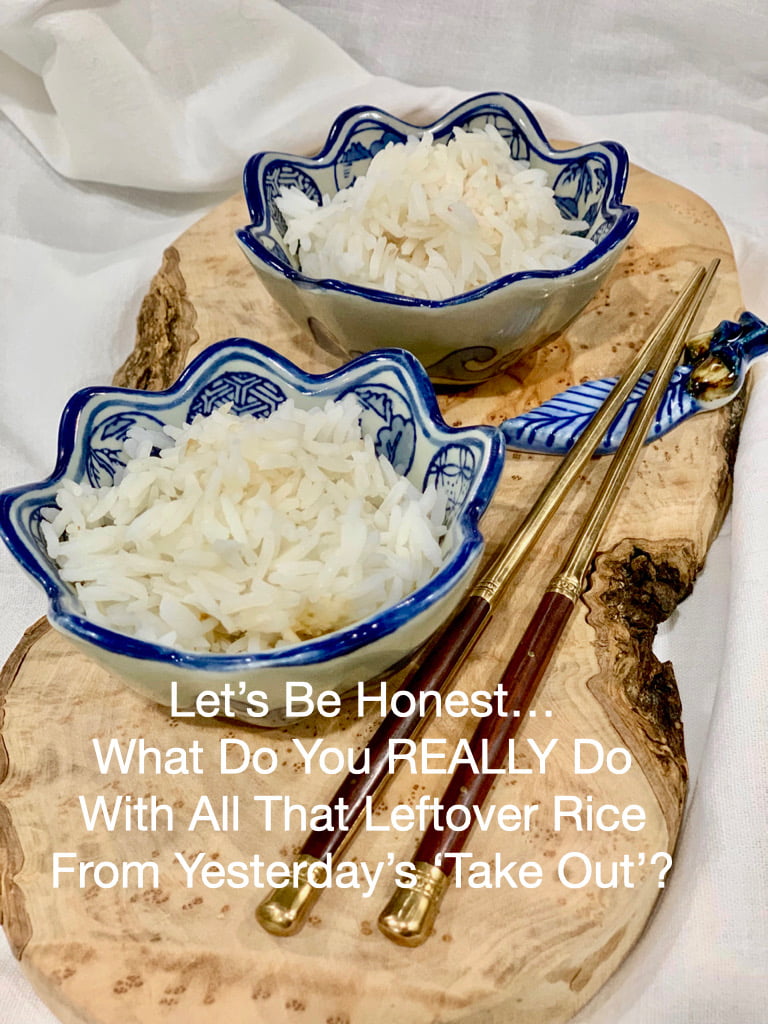
Don’t laugh, but confronting the dilemma of leftover rice, one day, I decided to do something wildly delicious with it!
Just so happens, I was in the middle of publishing my Muffin Madness Cookbook, which meant everything became inspiration.
That’s right, Cheesy Leftover Rice Muffins are actually a ‘thing’ now, since they are deliciously published in my cookbook!

Ingredients Needed
- Rice – of your choice
- Olive oil, or Butter
- Onion
- Water
- Dried chili pepper flakes
- Dried fruit – figs, cherries, cranberries, apricots, or raisins
- Ginger
- Coriander
- Mace
- Sumac
- Cardamom
- Salt
Equipment Needed
- Medium-size pot with a lid
- Measuring cup
- Measuring spoons
- Bowl
- Slotted spoon
- Stovetop or burner
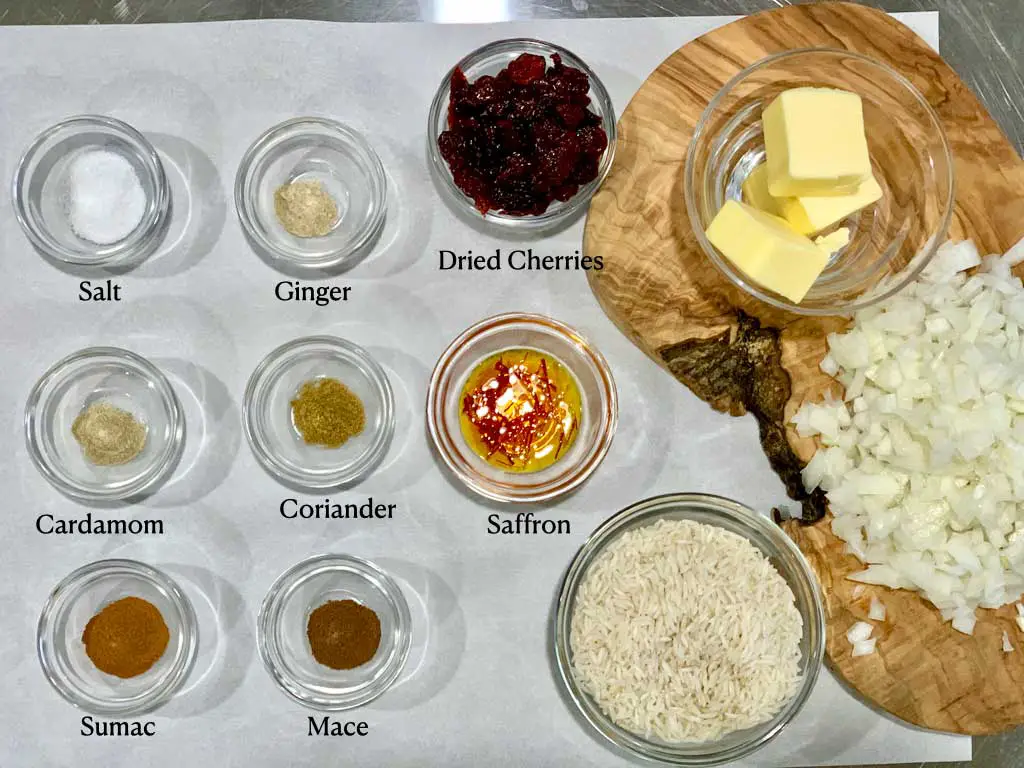
Moroccan Rice Pilaf With Dried Fruit
Equipment
- Heavy pot with lid
Ingredients
- 1 1/2 cups Rice see notes
- 3 tbsp Olive oil or melted butter
- 1/2 Onion finely chopped
- 2 1/4 cups Water heated
- 1 tsp Spices – Ginger, Coriander, Mace, Sumac, Cardamom, Salt equal amount for each
- Red pepper flakes pinch
- 1/2 cup Dried Fruit your choice, finely chopped
Instructions
- In a medium size saucepan on top of the stove, on medium heat, add the olive oil, or butter and let it get warm.
- Add the chopped onions and cook, stirring, until they become translucent.
- Add the rice, spices and dried fruit and stir until everything is coated with the oil.
- Add the heated water, stir, cover the pot, lower the heat to medium low and continue to cook, undisturbed for 20-minutes (longer if it is whole grain or brown rice).
- When ready to serve, simply toss and serve.
Video
Notes
- Any type of rice; long-grain rice, medium grain rice or short grain can be used. Cooking whole grain, wild rice or brown rice may require longer cooking time, however they can easily be used in the recipe by simply testing the texture for doneness.
- To reheat, place the rice (covered), over a larger pot of simmering water and allow the rice to reheat without overcooking it on direct heat.
